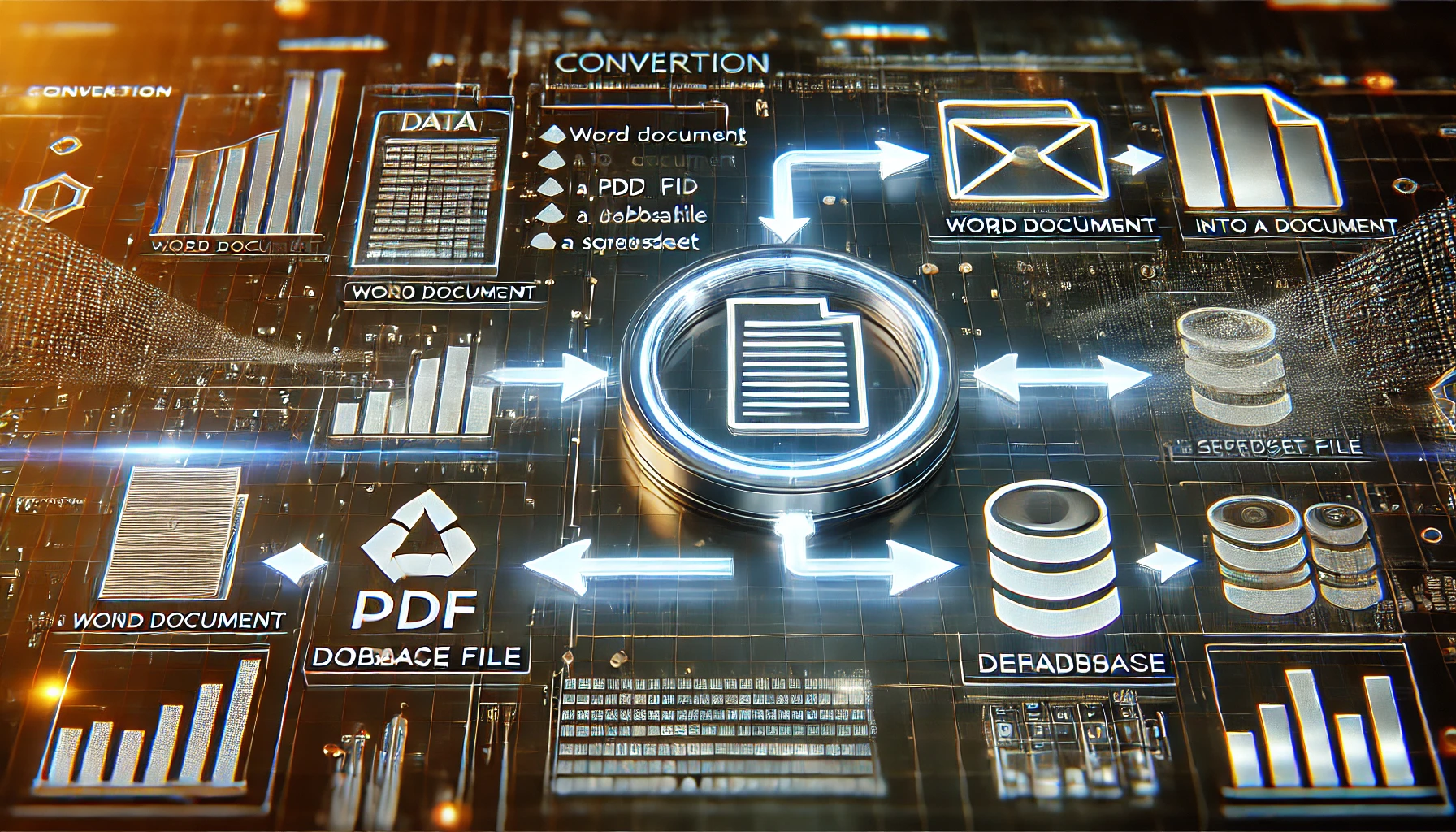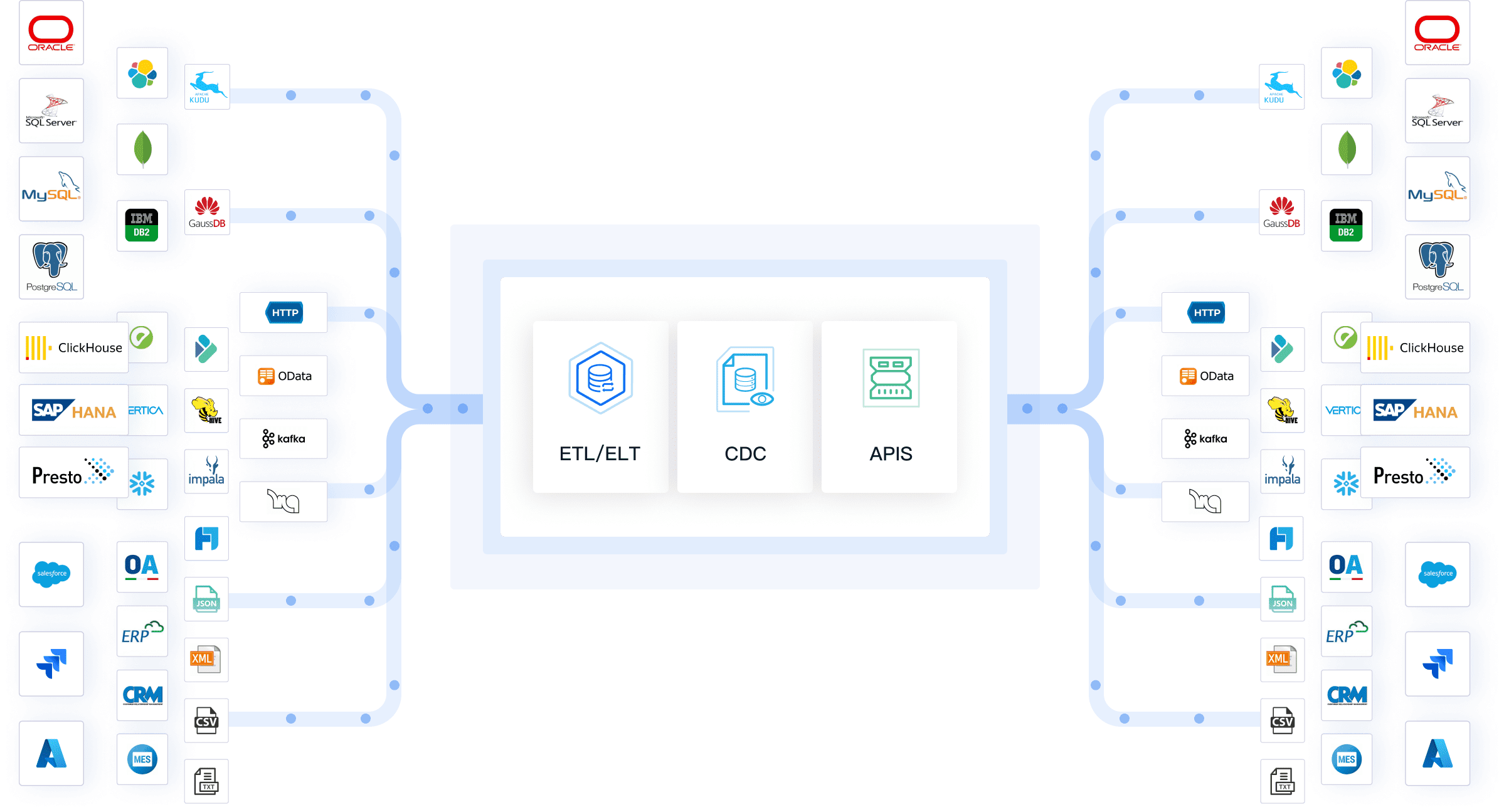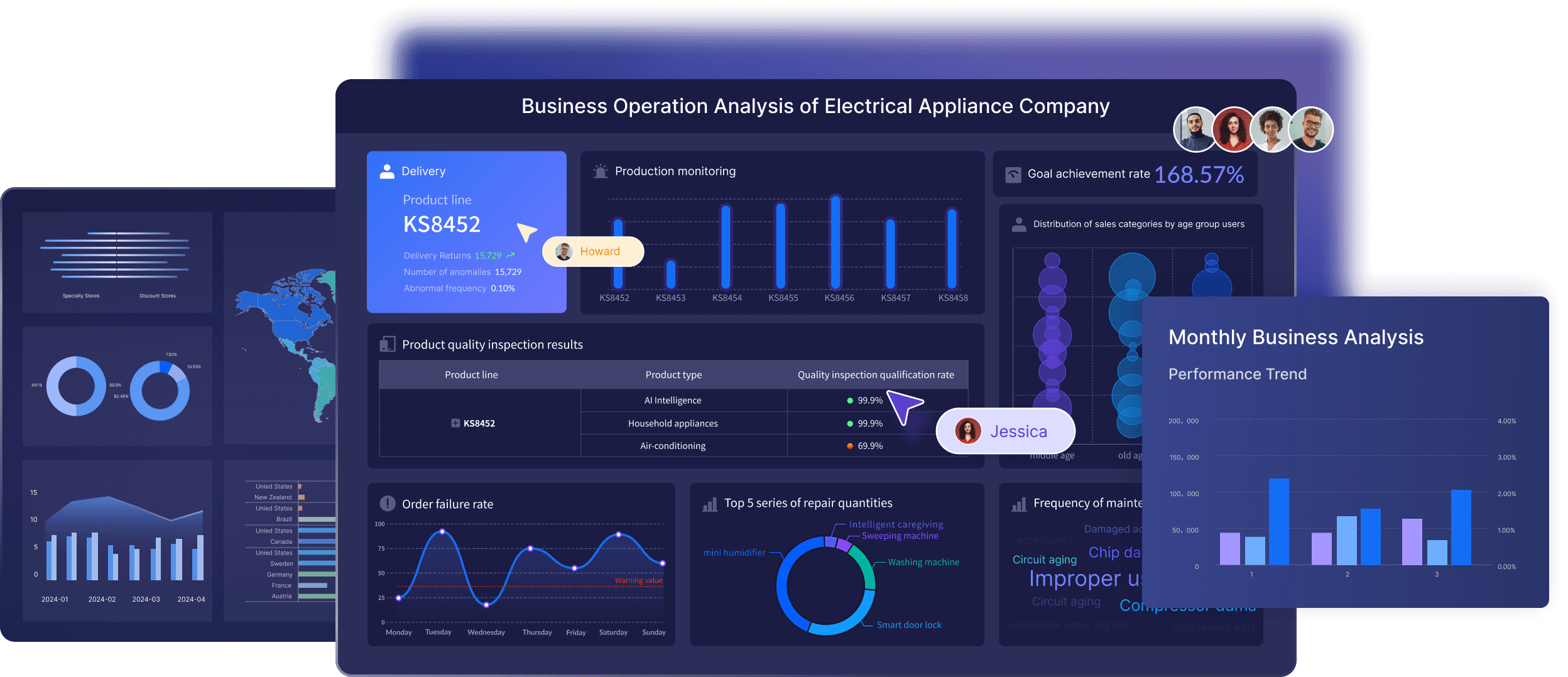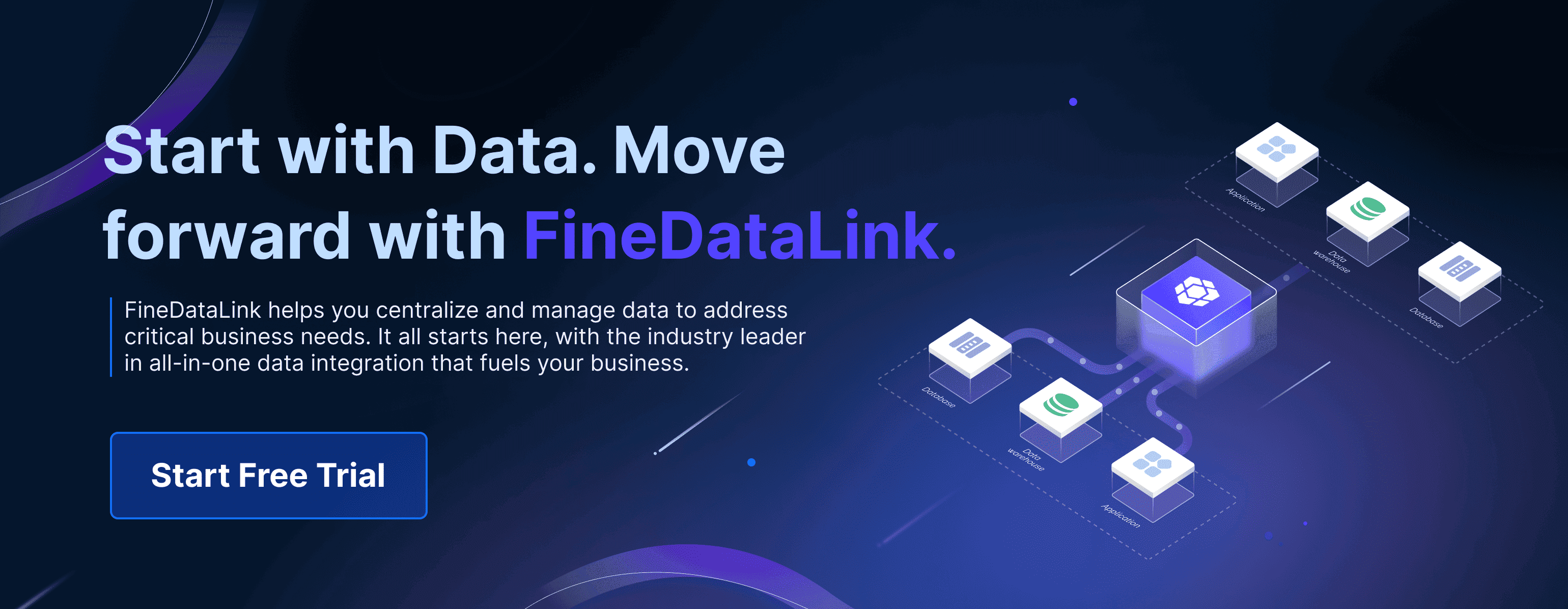Data conversion transforms data from one format to another, ensuring compatibility across various systems and applications. In today's tech-driven world, you find data conversion crucial for seamless integration and utilization of information. It plays a vital role in enhancing data quality and management efficiency. Businesses aiming for digital transformation rely on data conversion to streamline operations and improve decision-making. Tools like FineDataLink and FineBI simplify this process, reducing errors and saving time. By understanding data conversion, you can leverage its benefits to drive innovation and growth in your organization.

Defining Data Conversion
What is Data Conversion?
Data conversion involves transforming data from one format to another. This process ensures that your data remains compatible with different systems and applications. You might encounter data conversion when transferring information between software platforms or when updating legacy systems. For example, converting a Word document into a PDF file is a simple form of data conversion. Similarly, transforming a database file into a spreadsheet format allows you to analyze the data more effectively.

Types of Data Conversion
Data conversion comes in various forms, each serving a specific purpose. Understanding these types helps you choose the right approach for your needs.
Format Conversion
Format conversion changes the structure of your data without altering its content. You might convert a text file into a CSV file to make it easier to import into a database. This type of conversion is crucial when you need to ensure that your data can be read by different software applications.
Data Type Conversion
Data type conversion involves changing the data's type to suit a particular application or system. For instance, you might convert a string of numbers into an integer format to perform mathematical operations. This conversion ensures that your data functions correctly within the target environment.
Key Insight: According to the Matillion Blog, data conversion includes steps for accurate and efficient transformation, which are essential for maintaining data integrity across platforms.
By understanding these aspects of data conversion, you can better manage your data and ensure its usability across various systems. This knowledge is vital for businesses aiming for digital transformation, as highlighted by the Data Science Society. Proper data conversion not only enhances data quality but also streamlines operations, making it a cornerstone of effective data management strategies.

Importance of Data Conversion
Data conversion plays a pivotal role in modern data management and business operations. By transforming data into compatible formats, you can unlock numerous benefits that enhance both efficiency and decision-making processes.
Role in Data Management

Ensuring Data Compatibility
Data conversion ensures that your data remains compatible across various systems and applications. When you convert data, you reduce redundancies and improve data quality. This process simplifies data handling, making it easier for you to access and utilize information effectively. Without data conversion, managing data from different sources becomes cumbersome and error-prone.
Data integration becomes seamless with effective data conversion. You can integrate data from multiple sources, allowing for a comprehensive view of information. This integration empowers you to review and visualize data with ease, enhancing your ability to handle complex datasets intelligently. By converting data into a unified format, you not only streamline data analysis but also improve data reporting capabilities.
Data integration becomes seamless with effective data conversion. You can integrate data from multiple sources, allowing for a comprehensive view of information. This integration empowers you to review and visualize data with ease, enhancing your ability to handle complex datasets intelligently. By converting data into a unified format, you streamline data analysis and reporting capabilities.
Impact on Business Operations

Enhancing Decision-Making
Data conversion significantly enhances decision-making processes. When you have access to well-converted data, you can make informed decisions based on accurate and timely information. This process allows you to analyze trends, identify patterns, and predict outcomes more effectively. Businesses that leverage data conversion often experience improved strategic planning and operational efficiency.
Improving Data Accessibility
Improving data accessibility is another key benefit of data conversion. By converting data into user-friendly formats, you ensure that information is readily available to those who need it. This accessibility enables you to respond quickly to changes and make data-driven decisions. As a result, your organization can maintain a competitive edge in a rapidly evolving market.
Key Insight: According to industry experts, data conversion not only enhances data quality but also improves overall data management efficiency. This process empowers users to access, review, and visualize data with ease, allowing them to handle complex data effectively and intelligently.
By understanding the importance of data conversion, you can optimize your data management strategies and drive business success. This knowledge is essential for navigating the challenges of digital transformation and ensuring that your organization remains agile and responsive.
Techniques and Processes of Data Conversion
Understanding the techniques and processes involved in data conversion can greatly enhance your ability to manage and utilize data effectively. By mastering these methods, you can ensure that your data remains compatible and accessible across various platforms.

Common Data Conversion Techniques
Data conversion involves several techniques, each with its own advantages and applications. Here are two primary methods you might consider:
Manual Conversion
Manual conversion requires you to transform data by hand. This method suits small datasets or when precision is paramount. You might use manual conversion when dealing with sensitive information that requires careful handling. However, this approach can be time-consuming and prone to human error, especially with large volumes of data.
Automated conversion tools offer a more efficient alternative. These tools can handle large datasets quickly and accurately. By investing in such tools, you can reduce your workload and minimize errors. Many platforms include features like job schedulers, FTP uploads, and SQL query execution, which streamline the conversion process. Automation not only saves time but also enhances data accuracy and consistency.
Automated conversion tools offer a more efficient alternative. These tools can handle large datasets quickly and accurately. By investing in such tools, you can reduce your workload and minimize errors. Many platforms include features like job schedulers, FTP uploads, and SQL query execution, which streamline the conversion process. Automation not only saves time but also enhances data accuracy and consistency.
Product Overview: Data Conversion Tools typically feature advanced data automation capabilities, enabling seamless integration and streamlined workflows for data conversion.
Data Conversion Processes
The data conversion process typically involves three key stages. Understanding these stages helps you execute conversions smoothly and efficiently.
Data Extraction
Data extraction is the first step in the conversion process. You retrieve data from various sources, ensuring that you gather all necessary information. This stage is crucial for setting the foundation for successful data conversion. Proper extraction ensures that you have accurate and complete data to work with.
Data Transformation
Once you extract the data, the next step is transformation. During this stage, you convert the data into the desired format. This might involve changing data types, reformatting structures, or applying specific rules to ensure compatibility. Transformation is where you tailor the data to meet the requirements of the target system or application.
The final step is data loading. Here, you transfer the transformed data into the target system. This stage ensures that the data is ready for use in its new format. Successful loading means that your data is now accessible and usable within the intended environment.
The final step is data loading. Here, you transfer the transformed data into the target system. This stage ensures that the data is ready for use in its new format. Successful loading means that your data is now accessible and usable within the intended environment.
Product Information: Data Conversion Services provide expertise to ensure that your data transitions smoothly, accurately, and securely through these processes.
By understanding and applying these techniques and processes, you can enhance your data management capabilities. Effective data conversion unlocks new insights and improves decision-making, ultimately driving better strategic outcomes for your organization.
Applications in Observability of Data Conversion
Data conversion plays a pivotal role in enhancing the observability of systems and data analysis. By transforming data into compatible formats, you can ensure seamless monitoring and insightful analysis.

Monitoring Systems
Real-time Data Conversion
Real-time data conversion allows you to monitor systems effectively. By converting data as it streams in, you can maintain up-to-date information across your platforms. This capability ensures that you can respond promptly to any changes or anomalies. Real-time conversion supports operational efficiency by providing immediate insights, which are crucial for maintaining system stability and performance.
Data Conversion for Alerts
Data conversion also facilitates the creation of alerts. By converting data into a format suitable for alert systems, you can set up notifications for specific events or thresholds. This proactive approach helps you address potential issues before they escalate. Alerts based on converted data enable you to maintain a high level of system reliability and user satisfaction.
Key Insight: According to industry experts, integrating data conversion with monitoring systems enhances operational efficiency and decision-making by providing timely and accurate information.
Data Analysis
Preparing Data for Analysis
Before you can analyze data, you must prepare it through conversion. This step involves transforming raw data into a format that your analytical tools can process. Proper preparation ensures that your analysis is accurate and meaningful. By converting data effectively, you can eliminate inconsistencies and improve the quality of your insights.
Converting Data for Visualization
Data conversion is essential for creating visualizations. By transforming data into a format suitable for visualization tools, you can generate clear and informative graphics. These visualizations help you understand complex datasets and communicate findings effectively. Converting data for visualization enhances your ability to identify trends and make informed decisions.
Case Study: A leading retail company improved its decision-making process by converting sales data into visual dashboards. This approach allowed them to track performance metrics in real-time and adjust strategies accordingly.
By applying data conversion techniques in observability, you can optimize both monitoring and analysis processes. This application not only improves system performance but also empowers you to make data-driven decisions with confidence.
Data Conversion Applications in Business
Data conversion plays a crucial role in various business applications, enhancing both efficiency and decision-making. By transforming data into compatible formats, you can streamline operations and improve data accessibility.
Customer Data Management
Managing customer data effectively requires converting it into usable formats. This process ensures that you can access and analyze customer information efficiently.

Converting Customer Data Formats
You often encounter customer data in diverse formats. Converting these formats into a unified structure allows you to integrate and utilize the data seamlessly. For instance, transforming customer feedback from text files into a database format enables you to analyze trends and patterns more effectively. This conversion enhances your ability to understand customer needs and preferences.
Integrating Customer Data Sources
Integrating data from multiple customer sources provides a comprehensive view of customer interactions. By converting data from various platforms into a single format, you can create a unified customer profile. This integration supports personalized marketing strategies and improves customer service. You gain valuable insights into customer behavior, enabling you to tailor your offerings to meet their expectations.
Key Insight: According to industry experts, data conversion makes data more usable and accessible to different stakeholders within an organization. This accessibility is crucial for making informed decisions quickly and efficiently.
Financial Data Processing
In the realm of finance, data conversion ensures that financial information remains accurate and compliant with regulations. This process supports effective financial management and reporting.

Converting Financial Reports
Financial reports often require conversion to meet specific standards or formats. By converting these reports, you ensure that they are compatible with various financial systems and software. This compatibility facilitates accurate financial analysis and reporting. You can make informed financial decisions based on reliable data, enhancing your organization's financial health.
Ensuring Compliance Through Data Conversion
Compliance with financial regulations necessitates precise data conversion. By converting financial data into compliant formats, you adhere to legal requirements and avoid potential penalties. This process ensures that your financial records are accurate and transparent. You maintain trust with stakeholders and regulators by demonstrating a commitment to compliance.
Key Insight: Data conversion provides structured data that fuels more precise and swift data analysis, resulting in enhanced reporting and actionable insights.
By applying data conversion techniques in customer data management and financial processing, you can optimize business operations. This application not only improves data accessibility but also empowers you to make data-driven decisions with confidence.
Challenges in Data Conversion
Data conversion, while essential, presents several challenges that you must navigate to ensure successful outcomes. Understanding these challenges helps you prepare and implement effective strategies.

Data Quality Issues
Loss of Data Integrity
When you convert data, maintaining its integrity becomes crucial. Data integrity refers to the accuracy and consistency of data over its lifecycle. During conversion, you risk altering or losing data elements, which can lead to inaccuracies. For example, converting a large dataset from one format to another might result in missing values or altered data types. To prevent this, you should implement robust validation techniques and error-checking mechanisms. These practices help ensure that your data remains reliable and trustworthy throughout the conversion process.
Handling Incomplete Data
Incomplete data poses another significant challenge. You often encounter datasets with missing or incomplete information during conversion. This issue can arise from various sources, such as outdated systems or inconsistent data entry practices. Incomplete data can skew analysis and lead to incorrect conclusions. To address this, you should employ data cleaning and preprocessing techniques. These methods help fill gaps and standardize data, ensuring that your converted datasets are complete and ready for analysis.
Key Insight: Industry experts agree that addressing data quality issues during conversion is crucial for enhancing data reliability, which in turn leads to more accurate insights and improved decision-making.
Technical Challenges
Compatibility Issues
Compatibility issues often arise when you convert data between different systems or formats. Each system may have unique requirements, making it challenging to ensure seamless integration. For instance, converting data from a legacy system to a modern platform might involve complex transformations. To overcome compatibility challenges, you should thoroughly understand the target system's specifications and requirements. This knowledge allows you to tailor the conversion process, ensuring that your data functions correctly within the new environment.
Scalability Concerns
Handling vast datasets efficiently requires scalable solutions that can adapt to increasing demands. Automated conversion tools and cloud-based solutions offer scalability by processing large datasets quickly and accurately. By investing in these technologies, you can ensure that your data conversion processes remain efficient and effective, regardless of scale.
Key Insight: Automation tools and cloud computing enhance the scalability and dependability of data conversion processes, allowing you to handle large datasets with ease.
By understanding and addressing these challenges, you can optimize your data conversion efforts. This preparation not only improves data quality and compatibility but also ensures that your organization remains agile and responsive in a rapidly evolving digital landscape.
Best Practices for Effective Data Conversion
To achieve successful data conversion, you must adhere to best practices that ensure accuracy and efficiency. These practices help maintain data quality and integrity across systems.
Ensuring Data Accuracy
Data accuracy stands as a cornerstone of effective data conversion. You can employ several techniques to guarantee that your data remains precise and reliable.
Validation Techniques
Validation techniques play a crucial role in maintaining data accuracy. By implementing these methods, you can verify that your data meets specific criteria before conversion. For instance, you might use data validation rules to check for correct formats or acceptable value ranges. This step helps you catch errors early, preventing them from propagating through the conversion process.
Error-Checking Mechanisms
Error-checking mechanisms further enhance data accuracy. These tools allow you to identify and correct mistakes during conversion. You might use checksum algorithms or data integrity checks to ensure that your data remains consistent. By incorporating error-checking into your workflow, you can minimize inaccuracies and maintain high data quality.
Key Insight: According to industry experts, employing validation and error-checking techniques ensures data accuracy and consistency across systems, which is vital for effective data management.
Choosing the Right Tools
Selecting the appropriate tools for data conversion significantly impacts the success of your efforts. You must evaluate your options carefully to find the best fit for your needs.
When evaluating conversion tools, consider factors such as ease of use, compatibility, and scalability. You should assess whether the tool supports the data formats you work with and if it can handle your data volume. Additionally, look for features like automation capabilities and user support. A thorough evaluation helps you choose a tool that aligns with your requirements and enhances your conversion process.
Custom vs. Off-the-Shelf Solutions
Deciding between custom and off-the-shelf solutions requires careful consideration. Custom solutions offer tailored functionality, allowing you to address specific needs. However, they may require more resources and time to develop. Off-the-shelf solutions provide ready-made options that are often more cost-effective and quicker to implement. Weigh the pros and cons of each approach to determine which best suits your organization's goals and constraints.
Key Insight: Understanding the differences between custom and off-the-shelf solutions helps you make informed decisions about data conversion tools, ensuring that you leverage your existing data effectively.
By following these best practices, you can optimize your data conversion efforts. Ensuring data accuracy and choosing the right tools empower you to maintain data quality and usability, ultimately benefiting your organization in various ways.
FanRuan's Role in Data Conversion
FanRuan plays a pivotal role in the realm of data integration, offering innovative solutions that enhance data integration and business intelligence. With its cutting-edge products, FineDataLink and FineBI, FanRuan empowers organizations to harness the full potential of their data.

FineDataLink for Data Integration
FineDataLink stands out as a comprehensive platform for data integration. It simplifies complex data conversion tasks, ensuring seamless data flow across various systems.

Real-time Data Synchronization
With FineDataLink, you achieve real-time data synchronization. This feature allows you to keep your data updated across multiple platforms without delay. By synchronizing data in real-time, you maintain consistency and accuracy, which are crucial for effective decision-making.
Advanced ETL/ELT Capabilities
The platform also boasts advanced ETL (Extract, Transform, Load) and ELT (Extract, Load, Transform) capabilities. These functions enable you to transform data efficiently, ensuring it meets the specific requirements of your target systems. By leveraging these capabilities, you streamline data conversion processes, reducing errors and saving valuable time.
Company Information: FanRuan has transformed data management for companies like Hongkong Land and Red Bull, showcasing its expertise in data integration and analytics.
FineBI for Business Intelligence
FineBI serves as a powerful tool for business intelligence, providing insights that drive strategic growth.
Data Visualization and Analysis
With FineBI, you can visualize and analyze data effortlessly. The platform offers a range of visualization options, allowing you to present data in a clear and informative manner. By converting data into visual formats, you gain a deeper understanding of complex datasets, facilitating better communication of insights.

Enhancing Decision-Making with Data Insights
FineBI enhances decision-making by providing actionable data insights. You can explore trends, identify patterns, and predict outcomes with ease. This capability empowers you to make informed decisions that align with your business objectives. By integrating data conversion with business intelligence, FineBI ensures that you leverage your data effectively.
Company Information: FanRuan's collaboration with Danfoss highlights its commitment to leading smart manufacturing through innovative data solutions.
By utilizing FineDataLink and FineBI, you can optimize your data conversion efforts, ensuring that your organization remains agile and responsive in today's data-driven world.

FAQs and Related Topics of Data Conversion
1 How to choose a data conversion tool?
Selecting the right data conversion tool can significantly impact your data management efficiency. You should consider several factors when making this decision:
- Ease of Use: Look for tools with user-friendly interfaces that simplify the conversion process. This feature reduces the learning curve and allows you to focus on the task at hand.
- Compatibility: Ensure the tool supports the data formats you work with regularly. Compatibility is crucial for seamless integration across different systems.
- Scalability: Choose a tool that can handle your current data volume and scale as your needs grow. Scalability ensures that the tool remains effective as your organization expands.
- Automation Capabilities: Automated tools minimize manual intervention, reducing errors and saving time. Automation enhances accuracy and efficiency in data conversion tasks.
- Support and Documentation: Opt for tools that offer robust customer support and comprehensive documentation. These resources help you troubleshoot issues and maximize the tool's potential.
Key Insight: Investing in efficient data conversion tools can significantly reduce your workload and minimize the risk of errors, enhancing overall productivity.
2 What are the risks of data conversion?
Data conversion, while beneficial, comes with certain risks that you should be aware of:
- Data Loss: During conversion, there's a risk of losing data integrity. Implementing validation techniques and error-checking mechanisms can mitigate this risk.
- Incompatibility: Converting data between incompatible formats may lead to errors or data corruption. Understanding the target system's requirements helps prevent compatibility issues.
- Time Consumption: Manual data conversion can be time-consuming and prone to errors. Automated tools streamline the process, saving time and reducing the likelihood of mistakes.
- Security Concerns: Handling sensitive data during conversion necessitates stringent security measures to ensure data security and prevent unauthorized access or data breaches.
Key Insight: Addressing these risks effectively requires careful planning, robust strategies, and reliable solutions to ensure successful data conversion.
Related Topics
Data integration
Data integration involves combining data from different sources into a unified view. This process enhances data accessibility and usability, allowing you to make informed decisions based on comprehensive information. Data conversion plays a crucial role in data integration by transforming data into compatible formats.
Data migration
Data migration refers to moving data from one system or storage location to another. This process often involves data conversion to ensure that the data remains usable and accessible in the new environment. Understanding the differences between data conversion and data migration is crucial for effective data management.
Key Insight: As technology evolves, moving, updating, or reformatting data becomes essential to fit the current needs of your organization. Efficient data conversion tools facilitate early testing, uncover unknowns, and streamline the overall process.
Understanding data conversion is essential for optimizing your data management strategies. By mastering these techniques, you ensure that your data remains clean, compatible, and ready for further processing. Exploring various tools and methods can enhance your ability to handle data efficiently. Consider delving into resources like the Matillion Blog and Data Science Society to deepen your knowledge. These platforms offer insights into overcoming common hurdles and implementing best practices. By expanding your understanding, you empower yourself to leverage data conversion effectively, driving innovation and growth in your organization.
Click the banner below to experience FineDataLink for free and empower your enterprise to convert data into productivity!

Continue Reading about Data Integration
Essential Data Integration: A Beginner's Guide
Top Data Integration Tools: 2025 Guide
Top 10 Data Integration Software for 2025
What is API Data Integration? API vs Data Integration
Best Data Integration Platforms to Use in 2025
Enterprise Data Integration: A Comprehensive Guide
Top 7 Data Integration Patterns for Modern Enterprises

The Author
Howard
Data Management Engineer & Data Research Expert at FanRuan
Related Articles

10 Best Enterprise ETL Tools for Data Integration
Compare the 10 best enterprise ETL tools for data integration in 2025 to streamline workflows, boost analytics, and support scalable business growth.
Howard
Oct 02, 2025

What is Real Time Data Integration and Why It Matters
Real time data integration connects systems for instant, accurate data access, enabling faster decisions, improved efficiency, and better customer experiences.
Howard
Sep 24, 2025

What Is Salesforce Data Integration and Why It Matters
Salesforce data integration connects Salesforce with other systems, unifying data for accurate reporting, automation, and better business decisions.
Howard
Sep 24, 2025



